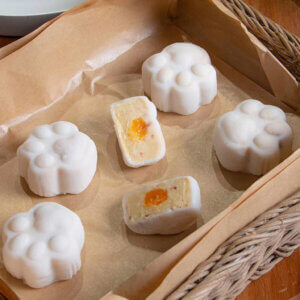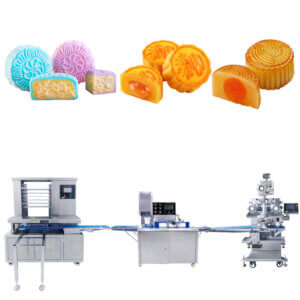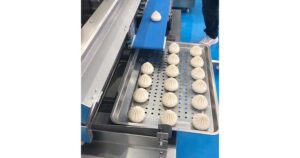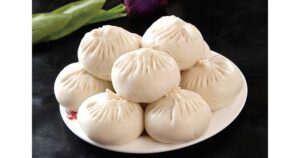Comprehensive Solutions for Mooncake Production Lines
In today’s competitive food production landscape, the demand for high-quality mooncakes is on the rise, thanks to evolving consumer tastes and preferences. As manufacturers strive to meet this demand, investing in an efficient mooncake production line has become essential. These advanced production systems not only streamline the manufacturing process but also ensure consistency and quality in the final product. In this article, we will explore the comprehensive solutions offered by modern mooncake production lines, examining key technologies, production processes, and market trends. By understanding these elements, food manufacturers can enhance their efficiency, reduce costs, and ultimately delight customers with exceptional mooncakes that reflect both tradition and innovation. Join us as we uncover the vital components and advancements driving the future of mooncake production.
Mooncake Production Line Overview
In this section, we will provide a brief introduction to mooncake production lines, including their definitions, basic components, and significance in the food production industry. We will discuss how modern mooncake production lines improve production efficiency and product quality, while also outlining the changes in market demand.
Definition of Mooncake Production Line
A mooncake production line is a series of automated machines and processes designed specifically for the mass production of mooncakes. These lines integrate various stages of production, including ingredient mixing, dough forming, filling, baking, and packaging, allowing for a streamlined manufacturing process.
Basic Components of a Mooncake Production Line
The key components of a typical mooncake production line include:
| Component | Description |
|---|---|
| Dough Mixer | A machine that combines flour and water to create dough. |
| Filling Machine | This adds different fillings (such as red bean or lotus seed) to the dough. |
| Forming Equipment | Shapes the dough into the desired mooncake shape. |
| Baking Oven | Bakes the formed mooncakes at controlled temperatures. |
| Cooling System | Allows baked mooncakes to cool before packaging. |
| Packaging Machine | Automates the process of packaging mooncakes for distribution. |
Importance in Food Production
Mooncake production lines play a crucial role in food manufacturing for several reasons:
- Increased Efficiency: Automation reduces manual labor and accelerates production speed, leading to higher output rates.
- Consistent Quality: Advanced machinery ensures uniformity in size, shape, and flavor, meeting consumer expectations.
- Cost-Effectiveness: Streamlined operations lower production costs by minimizing waste and optimizing resource use.
- Adaptability: Modern production lines can be adjusted to meet changing market demands, allowing for the introduction of new flavors and variations.
Changes in Market Demand
The market for mooncakes has evolved significantly, driven by factors such as cultural shifts, health consciousness, and internationalization. Some notable trends include:
- Healthier Options: There is a rising demand for low-sugar, whole grain, and vegetarian mooncakes as consumers become more health-aware.
- Diverse Flavors: Traditional flavors are being complemented by innovative options like chocolate, fruit, and even savory fillings to attract younger audiences.
- Gift Packaging: The trend of gifting mooncakes during festivals encourages higher sales, leading manufacturers to invest in more visually appealing packaging solutions.
By understanding these dynamics, businesses can better position themselves to respond to market trends and consumer preferences, ultimately enhancing their competitiveness in the mooncake market.
Analysis of Key Technical Parameters
In this section, we will introduce the key technical parameters of mooncake production lines, such as output, power consumption, and energy efficiency. We will elaborate on how to select appropriate technical specifications based on different production needs, whether for traditional handmade methods or automated processes, in order to satisfy various customer requirements.
Key Technical Parameters
| Parameter | Description | Importance |
|---|---|---|
| Output Capacity | The number of mooncakes produced per hour (pieces/hour). | Determines production scale and meets market demand. |
| Power Consumption | The amount of electrical power required by the production line (kilowatts). | Affects operational costs and energy efficiency. |
| Energy Efficiency | Ratio of output to energy consumed; measured in pieces per kilowatt-hour. | Indicates cost-effectiveness and sustainability. |
| Footprint Size | The total area occupied by the production line (square meters). | Relevant for facility layout planning and space utilization. |
| Automation Level | Degree of automation in the production process (percentage of automated vs manual tasks). | Influences labor costs and production speed. |
Choosing the Right Technical Parameters
When selecting the technical parameters for a mooncake production line, it is essential to consider the specific production demands, as they can vary significantly between traditional handmade production and modern automated systems.
-
Traditional Handmade Production
- Output Capacity: Typically lower, usually ranging from 100 to 500 pieces/hour. This is suitable for artisanal producers focusing on quality over quantity.
- Power Consumption: Generally lower since fewer machines are used, often below 10 kilowatts.
- Energy Efficiency: Less critical due to smaller production scales, but producers must still be mindful of sustainable practices.
-
Automated Production
- Output Capacity: Advanced automated lines can produce between 1,000 to 5,000 pieces/hour, catering to large-scale commercial production.
- Power Consumption: Higher energy requirements, often exceeding 50 kilowatts, due to multiple machines operating simultaneously.
- Energy Efficiency: Critical for cost management, with modern lines achieving up to 200 pieces/kilowatt-hour.
Meeting Diverse Customer Needs
By understanding and analyzing these key technical parameters, manufacturers can tailor their production lines to match customer expectations effectively:
- Small Bakeries: May opt for lower output capacity and energy-efficient machines suitable for artisanal production, emphasizing unique flavors and high-quality ingredients.
- Large Factories: Will benefit from high-output, energy-efficient automated lines that maximize production while minimizing operational costs.
In conclusion, careful consideration of key technical parameters allows food manufacturers to align their production capabilities with market demands, ensuring they can deliver high-quality mooncakes that meet the diverse needs of their customers.
Production Process of Mooncake Production Line
In this section, we will conduct a detailed analysis of the production process of mooncakes, including steps such as dough preparation, filling production, molding, baking, and packaging. We will explore how to optimize each stage of the process to enhance overall production efficiency and product quality.
1. Dough Preparation
Process Overview: The first step involves preparing the dough, which is essential for the texture and taste of the mooncake.
- Ingredients: Typically consists of flour, water, golden syrup, and alkaline water.
- Mixing: Ingredients are mixed until a smooth dough is formed, which is then allowed to rest for a period (usually 1-2 hours) to enhance gluten development.
Optimization Strategies:
- Automated Mixing Machines: Implementing mixing machines that ensure consistency and reduce manual labor.
- Adjusting Rest Time: Fine-tuning resting times based on humidity and temperature conditions to achieve optimal dough elasticity.
2. Filling Production
Process Overview: The quality of the filling is critical to the overall flavor profile of the mooncakes.
- Ingredient Selection: Common fillings include lotus seed paste, red bean paste, and mixed nuts.
- Cooking: Fillings are cooked to achieve the desired flavor and moisture content.
Optimization Strategies:
- Batch Cooking Systems: Utilize large-capacity cooking systems that can prepare multiple fillings simultaneously, ensuring consistency and reducing downtime.
- Quality Control: Implementing strict quality control measures to ensure each batch meets the desired taste and texture standards.
3. Molding
Process Overview: Once the dough and filling are prepared, the next step is to mold the mooncakes.
- Portioning: The dough and filling are weighed and divided into equal portions.
- Molding Techniques: Depending on the type of mooncake, various molding techniques can be applied (e.g., manual pressing, automatic stamping).
Optimization Strategies:
- Precision Weighing Systems: Incorporating electronic scales to ensure consistent portion sizes for uniform mooncakes.
- Automated Molding Machines: Using machines that offer high-speed molding capabilities while maintaining the quality of shape and design.
4. Baking
Process Overview: Baking is a critical step as it influences the texture and flavor of the mooncake.
- Temperature Control: Mooncakes are typically baked at temperatures between 180-220°C (356-428°F).
- Baking Time: The duration varies based on the size and type of mooncake but usually lasts around 20-30 minutes.
Optimization Strategies:
- Convection Ovens: Employing modern convection ovens for uniform heating and better control over baking conditions.
- Adjustable Baking Profiles: Developing specific baking profiles for different mooncake types to enhance the final quality.
5. Packaging
Process Overview: The last step involves packaging, which plays a crucial role in preserving freshness and ensuring product appeal.
- Materials: Packaging materials must protect the mooncakes and be visually appealing.
- Sealing and Labeling: Efficient sealing machines are necessary to prevent contamination and maintain freshness.
Optimization Strategies:
- Automated Packaging Lines: Implementing fully automated packaging solutions to streamline the process and minimize labor.
- Sustainable Packaging: Exploring eco-friendly packaging materials to attract environmentally conscious consumers.
Conclusion
By optimizing each stage of the mooncake production process—from dough preparation through to packaging—manufacturers can significantly improve both production efficiency and product quality. Incorporating advanced technology, such as automated systems and precise quality control measures, allows producers to meet the growing demands of the market while maintaining the rich traditions of mooncake making. Through continuous evaluation and adaptation, producers can enhance their competitive advantage.
Global Market Trends and Impacts
In this section, we will analyze the latest trends in the global mooncake market, including changes in consumer preferences, new product development, and market expansion opportunities. We will also discuss how to leverage modern production lines to meet these trends and enhance corporate competitiveness.
1. Changes in Consumer Preferences
Focus on Health and Natural Products
In recent years, there has been a significant increase in consumer demand for health and natural food products. More consumers are opting for mooncakes that are free from additives, low in sugar, or made with healthy ingredients. For example, mooncakes made with whole grain flour, natural sweeteners, and fresh fruits have gained popularity.
Desire for Personalization and Variety
Modern consumers particularly favor products with unique flavors and personalization options, such as matcha-flavored, durian-flavored, or even exotic-flavored mooncakes. This shift emphasizes the growing importance of new product development.
2. New Product Development
Innovative Flavors and Styles
To cater to the evolving tastes and preferences of consumers, many manufacturers are actively developing innovative products. This includes the introduction of mooncakes with seasonal fruits, nuts, and even dairy products. The rise of mini mooncakes and single-serving options caters to consumer demand for convenience and portion control.
Functional Foods
With increasing health consciousness, there is a rising demand for functional foods among consumers. The mooncake market has also started to address this trend by launching mooncakes enriched with ingredients like collagen and probiotics.
3. Market Expansion Opportunities
International Markets
With the global spread of Chinese culture, the potential for mooncake markets internationally is becoming increasingly significant. Many Chinese communities and consumers interested in Chinese culture around the world provide a broad market base for mooncake exports. Furthermore, combining traditional Chinese mooncakes with local flavors presents new opportunities for product internationalization.
E-commerce Channels
The rise of e-commerce platforms has changed traditional sales methods. Companies can directly engage with consumers through e-commerce, offering customization options and holiday promotions, which can boost sales.
4. Leveraging Modern Production Lines
Smart Automation
By integrating smart automation production lines, companies can enhance their flexibility in responding to market demand. Automation can significantly reduce labor costs, increase production efficiency, and ensure product consistency and quality.
Speed of Market Response
Modern production lines allow companies to quickly respond to market changes and rapidly develop and launch new products. Businesses can utilize data analytics during the product development process to identify market trends and produce accordingly.
Sustainable Production
Environmental concerns have become an essential aspect of global consumption trends. Modern production lines can minimize environmental impacts through energy efficiency and recycling, meeting consumer demand for sustainable products.
Conclusion
The global mooncake market is undergoing rapid development and change, with increasingly diverse consumer preferences; health and innovation are becoming vital market drivers. By adopting modern production lines and intelligent management, companies can effectively address these market trends, thereby enhancing their competitiveness. This approach not only helps satisfy consumer needs but also provides a solid foundation for sustainable growth and global expansion. With the increase in market opportunities, timely adjustments and optimizations in production processes and product positioning will create greater success for businesses in a highly competitive landscape.
Choosing the Right Mooncake Production Line
When selecting a mooncake production line, various factors must be considered to ensure the optimal balance between efficiency, quality, and cost. This section will delve into the key elements to evaluate, such as production capacity, level of automation, after-sales support, and cost-effectiveness. Additionally, we will provide successful case studies to help readers understand how to make informed decisions based on their unique circumstances.
1. Factors to Consider in Choosing a Mooncake Production Line
Production Capacity
Assessing the production capacity is crucial for meeting market demands. Consider current production needs and factor in future growth potential. A line with adjustable production capacity allows for flexibility in scaling operations during peak seasons, such as the Mid-Autumn Festival.
Degree of Automation
The level of automation in a production line affects labor costs, consistency, and production speed. Fully automated lines can significantly increase efficiency and reduce human error, while semi-automated options may provide a balance between labor engagement and automation, depending on business size and budget constraints.
After-Sales Service
Reliable after-sales support is essential for minimizing downtime and addressing equipment issues promptly. Look for suppliers that offer comprehensive service packages, including installation, training, and ongoing support, to ensure smooth operation of the production line.
Cost-Effectiveness
Evaluate the total cost of ownership, including the initial investment, operational costs, and potential savings from increased efficiency. While a lower initial investment may be appealing, consider the long-term benefits of investing in higher-quality equipment and service.
2. Successful Case Studies
Case Study 1: A Mid-Sized Bakery in China
A mid-sized bakery specializing in traditional mooncakes upgraded its production line to a semi-automated system that increased production capacity from 2,000 to 5,000 mooncakes per day. The bakery chose this line for its balance of automation and cost-effectiveness, which allowed them to maintain quality while expanding capacity. With the suppliers’ strong after-sales support, they quickly adapted to the new system, leading to a 30% increase in revenue during the peak season.
Case Study 2: An International Mooncake Brand
An international mooncake producer opted for a fully automated production line to meet the growing demand from overseas markets. This decision not only tripled their production efficiency but also improved product consistency, crucial for maintaining brand reputation. The supplier’s ongoing support helped them integrate the new line with their existing systems, demonstrating the importance of good service in equipment selection.
Conclusion
Choosing the right mooncake production line is integral to business growth and product quality. By evaluating key factors such as production capacity, automation level, after-sales service, and cost-effectiveness, businesses can make informed decisions tailored to their specific needs. Additionally, learning from successful case studies can provide valuable insights to help guide this important investment. This framework aims to equip readers with the knowledge necessary to understand mooncake production lines and make decisions that foster long-term success.

Elevate Your Mooncake Production with Seny Machine
In conclusion, selecting the right mooncake production line is a pivotal step in enhancing your bakery’s efficiency, quality, and overall profitability. By carefully considering factors such as production capacity, automation level, after-sales support, and cost-effectiveness, you can make a well-informed decision that aligns with your business objectives.
At Seny Machine, we understand the unique demands of mooncake production and are committed to providing top-of-the-line equipment designed to meet those needs. Our advanced production lines are fully automated, ensuring optimal efficiency and consistency while also offering exceptional after-sales service to support you every step of the way.
Don’t miss the opportunity to elevate your mooncake production this season. Visit our website today to explore our range of machines and discover how Seny Machine can help you take your business to new heights! Transform your production process and satisfy customer demands with the best equipment on the market.Click here to get started!









